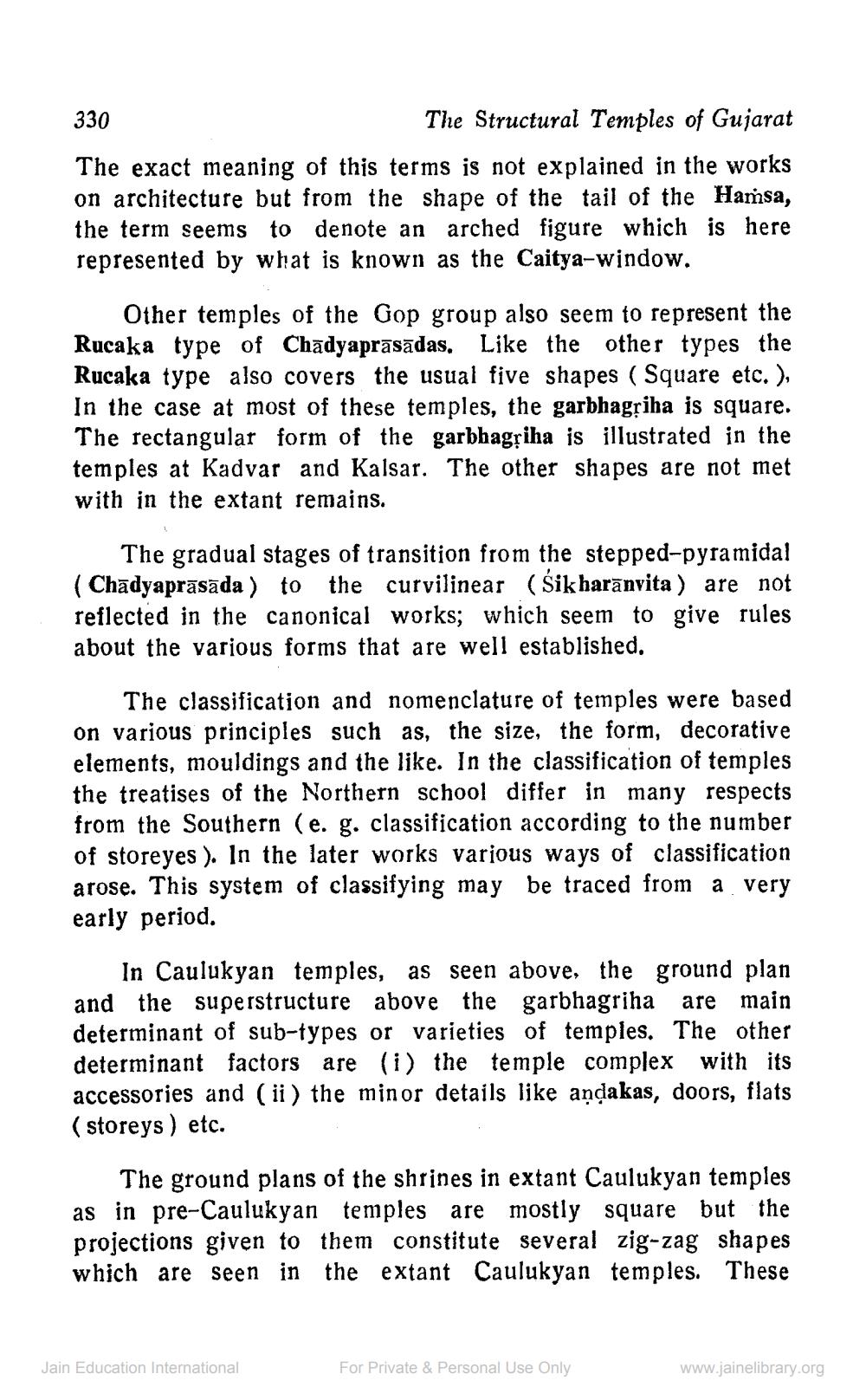________________
330
The Structural Temples of Gujarat The exact meaning of this terms is not explained in the works on architecture but from the shape of the tail of the Hamsa, the term seems to denote an arched figure which is here represented by what is known as the Caitya-window.
Other temples of the Gop group also seem to represent the Rucaka type of Chādyaprāsādas. Like the other types the Rucaka type also covers the usual five shapes ( Square etc. ), In the case at most of these temples, the garbhagņiba is square. The rectangular form of the garbhagļiha is illustrated in the temples at Kadvar and Kalsar. The other shapes are not met with in the extant remains.
The gradual stages of transition from the stepped-pyramidal ( Chādyaprāsāda) to the curvilinear (Śik harānvita ) are not reflected in the canonical works; which seem to give rules about the various forms that are well established.
The classification and nomenclature of temples were based on various principles such as, the size, the form, decorative elements, mouldings and the like. In the classification of temples the treatises of the Northern school differ in many respects from the Southern (e. g. classification according to the number of storeyes ). In the later works various ways of classification arose. This system of classifying may be traced from a very early period.
In Caulukyan temples, as seen above, the ground plan and the superstructure above the garbhagriha are main determinant of sub-types or varieties of temples. The other determinant factors are (i) the temple complex with its accessories and (ii) the minor details like andakas, doors, flats (storeys ) etc.
The ground plans of the shrines in extant Caulukyan temples as in pre-Caulukyan temples are mostly square but the projections given to them constitute several zig-zag shapes which are seen in the extant Caulukyan temples. These
Jain Education International
For Private & Personal Use Only
www.jainelibrary.org




